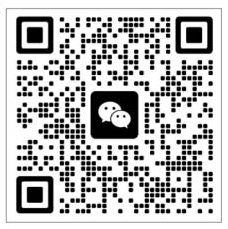E-mail:Machine@chinaventech.com Expert for pre insulated duct CNC cutting machine.
Policies, Regulations And Standards Of The PI Insulated Duct Industry
PI (polyisocyanurate) insulated ducts play a crucial role in HVAC (Heating, Ventilation, and Air Conditioning) systems. These ducts are designed to maintain optimal temperature and humidity levels by effectively insulating the airflow. They are widely used in both residential and commercial buildings due to their excellent thermal and acoustic insulation properties. However, the manufacture, installation, and maintenance of PI insulated ducts are subject to various policies, regulations, and standards designed to ensure their performance and safety. Understanding these requirements is essential for manufacturers, installers, and building managers to ensure compliance and optimal performance.
Current Policies and Regulations Impacting the Industry:
The PI insulated duct industry is governed by a range of policies and regulations aimed at ensuring energy efficiency, fire safety, and environmental impact. On a global scale, organizations like the International Energy Agency (IEA) and the European Union (EU) have established guidelines that influence the design, manufacturing, and installation of these ducts. In the United States, agencies such as the Department of Energy (DOE) and the National Fire Protection Association (NFPA) have their own standards.
Key Points: - Energy Efficiency Standards: PI insulated ducts must meet certain insulation thickness requirements to ensure they achieve the specified R-value. These standards help reduce heat loss or gain, thereby lowering energy consumption. - Fire Safety Regulations: NFPA 211, which pertains to duct systems, requires specific fire protection measures for ducts, including the use of fire-resistant materials and proper installation techniques. Compliance with these regulations is critical to preventing the spread of fire in case of a blaze. - Environmental Impact Assessments: Local jurisdictions often require PI insulated duct manufacturers to conduct environmental impact assessments to ensure that the production process does not harm the environment. This can include issues like waste management and chemical usage.
Comparative Analysis of Local and International Standards:
Comparing local and international standards for PI insulated ducts reveals significant differences in focus and requirements. For instance, the European Union's EN 13800 standard sets stringent requirements for thermal insulation, combustion safety, and fire resistance. In contrast, the U.S. National Fenestration Rating Council (NFRC) focuses more on energy efficiency and air tightness.
Comparative Analysis: - Example from Europe: EN 13800 mandates that PI insulated ducts must meet minimum insulation thicknesses to ensure a specified R-value. Additionally, the standard includes requirements for the material composition and manufacturing process to prevent off-gassing of harmful chemicals. - Example from the U.S.: The NFRC standards prioritize energy efficiency and air tightness. They specify that PI insulated ducts must be designed to achieve certain energy efficiency ratings, which can also contribute to better indoor air quality.
These differences highlight the importance of understanding both local and international standards to ensure compliance and optimal performance.
Case Studies of Industry Best Practices:
Leading companies in the PI insulated duct industry have devised effective strategies to comply with policies, regulations, and standards. Case studies from these companies demonstrate best practices that can be adopted by others.
Case Study 1: Company A - Compliance Focus: Company A adheres to stringent environmental standards, including the use of sustainable materials and waste reduction practices. They source their materials from suppliers who meet the latest environmental standards. - Impact: This approach has not only improved their environmental credentials but has also led to cost savings through reduced waste and energy efficiency.
Case Study 2: Company B - Compliance Focus: Company B focuses on rigorous fire safety measures, including the use of fire-resistant materials and proper installation techniques. They conduct regular training for their installers to ensure compliance. - Impact: These measures have helped them secure contracts from fire-safety-conscious clients, enhancing their market position.
Challenges and Opportunities in Compliance:
Adhering to policies, regulations, and standards presents both challenges and opportunities for companies in the PI insulated duct industry.
Challenges: - Regulatory Complexity: The varying standards across different regions can be complex and time-consuming to navigate. - Cost Implications: Compliance often requires additional investments in training, materials, and technologies, which can be a financial burden.
Opportunities: - Market Advantages: Compliance can help companies win contracts from clients who prioritize sustainability and safety, offering a competitive edge. - Cost Savings: Long-term, compliance can lead to cost savings through reduced energy consumption and lower maintenance costs.
Future Trends in Policy and Regulatory Development:
As the demand for sustainable and energy-efficient HVAC systems grows, the policies and regulations governing the PI insulated duct industry are likely to evolve. Future trends include:
- Increased Focus on Sustainable Materials: There is a growing emphasis on using materials with a lower environmental impact, such as recycled polyisocyanurate.
- More Stringent Energy Efficiency Requirements: Regulatory bodies are likely to introduce stricter standards for energy efficiency, pushing companies to innovate and improve their products.
These trends will shape the future of the PI insulated duct industry, offering both challenges and opportunities.
Summary and Key Takeaways:
In conclusion, understanding the policies, regulations, and standards in the PI insulated duct industry is crucial for manufacturers, installers, and building managers. Adhering to these standards ensures optimal performance, safety, and sustainability. The industry faces challenges in navigating complex regulations and managing costs, but these challenges can be overcome through strategic compliance and innovation. By staying informed about emerging trends and best practices, companies can position themselves for success in the evolving industry landscape.
Quick Links
Products
Contact Us


